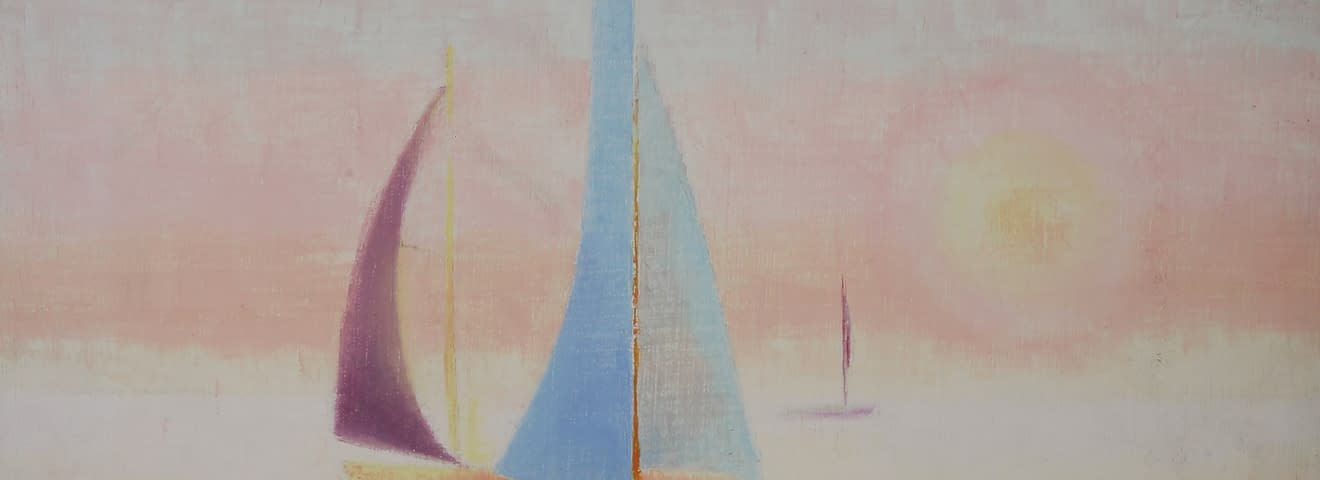Marthe Brilman
Art style
About
Als selbsternannte Nachfahrin der Wikinger übernahm sie schon früh deren Stärke und Willenskraft. Sie wusste von klein auf, dass sie Malerin werden wollte. Mit 11 konnte sie dann zum ersten Mal ihre Werke ausstellen, worauf sie dann von 1958 – 1962 an der École de Baux-Arts in Paris studierte. Sie war damals und ist es noch heute, ein Freigeist, die ihre Liebschaften während dem Studium genoss, zwei Töchter grosszog und ihre Kunst zielstrebig verfolgte. Daneben reiste sie alleine nach Afrika, segelte im bretonischen Meer und erklomm so mancher Berg. Immer mit dabei, ihr Skizzenbuch.
Ihr Stil ist eigen. Nichts Geringeres als die Poesie der Realität versucht sie immer wieder aufs Neue darzustellen. Ein sinnliche, eigenständige, weit unterschätzte und starke Künstlerin!
Katia Granoff stellte Marthe Brilmans Kunst permanent in ihrer Kunstgalerie von 1972 bis 1990 aus, wodurch sie ihre Werke an Kunstsammler weltweit verkaufen konnte. Seither zeigt und verkauft die Künstlerin ihre Kunst in ihrem Atelier in Paris
Marthe Brilman was a talented drawer already as a child and knew as early as age 6 that she would become a painter. When she was 11, her work was exhibited next to that of her cousin who is a recipient of the Rome Prize! Unsurprisingly, Marthe Brilman became a student of the famous from 1958 to 1962.
In addition to the seascapes and landscapes from all around the world, Marthe Brilman paints still live subjects. Some of them are oversized which gives the genre a modern twist. Her technique is very unique. Marthe Brilman paints with a filling knife but leaves no relief on the canvas.
Katia Granoff and other art critics have described her unique style. In her book Mémoires – Chemin de ronde, Katia Granoff writes:
“How to define the indefinable, to suggest shapes in fleeting light? How to escape from contingencies to create an enchanted world? Ask Marthe Brilman (…) her harmonies of faded shades are not limited to black lines, and yet these shapes are self-sufficient and define themselves in space. Regardless of the subject matter, she turns it into a song, which penetrates the soul and exhilarates it deliciously."
In his book Les signes du temps et l’art moderne, René Huyghe from the Académie Française writes:
“The abandoned barge. This pattern of the useless, abandoned barge, appears like a leitmotiv in multiple pieces devoted to the evocation of loneliness… The abandoned barge floats on a water mirror which only reflects an empty sky.”
Ihr Stil ist eigen. Nichts Geringeres als die Poesie der Realität versucht sie immer wieder aufs Neue darzustellen. Ein sinnliche, eigenständige, weit unterschätzte und starke Künstlerin!
Katia Granoff stellte Marthe Brilmans Kunst permanent in ihrer Kunstgalerie von 1972 bis 1990 aus, wodurch sie ihre Werke an Kunstsammler weltweit verkaufen konnte. Seither zeigt und verkauft die Künstlerin ihre Kunst in ihrem Atelier in Paris
Marthe Brilman was a talented drawer already as a child and knew as early as age 6 that she would become a painter. When she was 11, her work was exhibited next to that of her cousin who is a recipient of the Rome Prize! Unsurprisingly, Marthe Brilman became a student of the famous from 1958 to 1962.
In addition to the seascapes and landscapes from all around the world, Marthe Brilman paints still live subjects. Some of them are oversized which gives the genre a modern twist. Her technique is very unique. Marthe Brilman paints with a filling knife but leaves no relief on the canvas.
Katia Granoff and other art critics have described her unique style. In her book Mémoires – Chemin de ronde, Katia Granoff writes:
“How to define the indefinable, to suggest shapes in fleeting light? How to escape from contingencies to create an enchanted world? Ask Marthe Brilman (…) her harmonies of faded shades are not limited to black lines, and yet these shapes are self-sufficient and define themselves in space. Regardless of the subject matter, she turns it into a song, which penetrates the soul and exhilarates it deliciously."
In his book Les signes du temps et l’art moderne, René Huyghe from the Académie Française writes:
“The abandoned barge. This pattern of the useless, abandoned barge, appears like a leitmotiv in multiple pieces devoted to the evocation of loneliness… The abandoned barge floats on a water mirror which only reflects an empty sky.”


